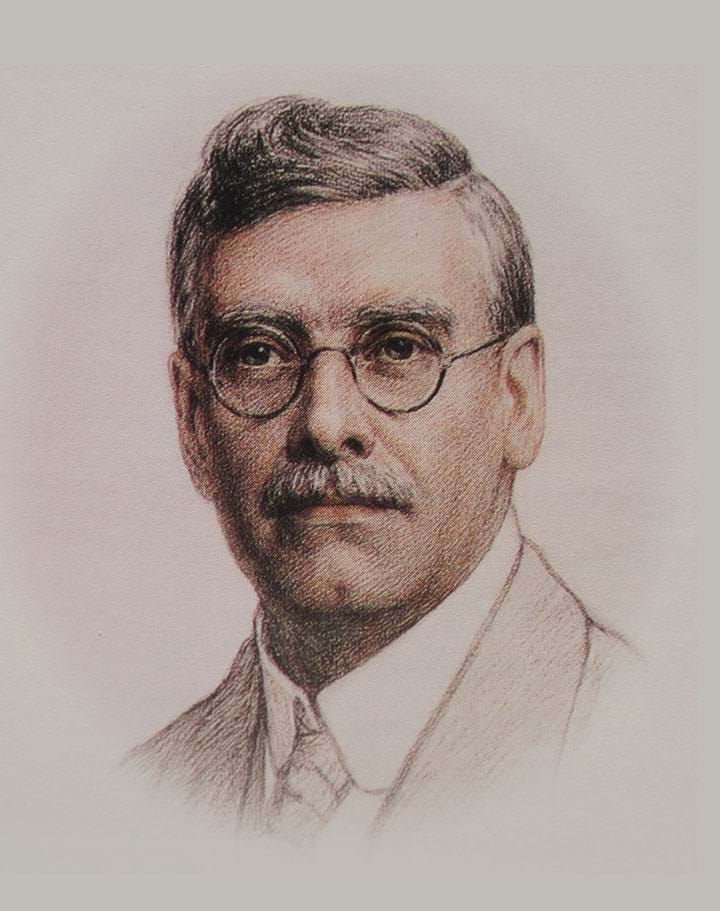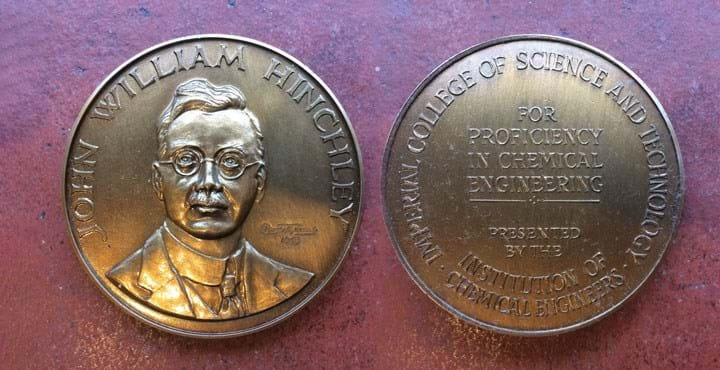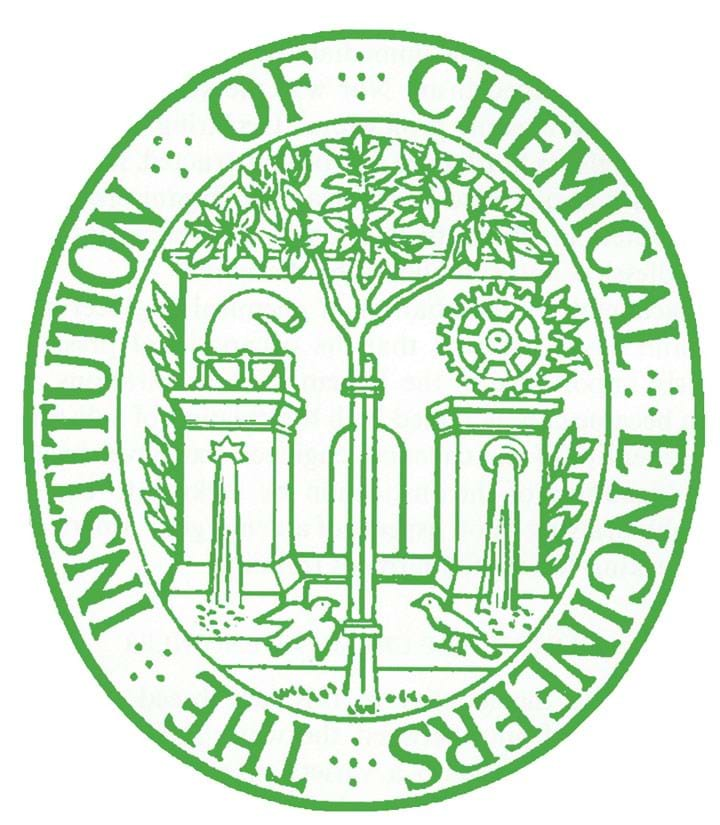The Forgotten Founder of IChemE

Martin Pitt celebrates the life of John W Hinchley
WHO founded the Institution of Chemical Engineers? No, not George E Davis – he died 15 years before IChemE began. It was John W Hinchley, of whom Chemical Age said: “The establishment, a few years later, of the Institution of Chemical Engineers was due to him perhaps more than any single person.” The prestigious journal Nature said it was largely due to Hinchley that the concept of the chemical engineer had become accepted and “he was instrumental in the formation of IChemE.”
In 1926 Hinchley literally defined modern chemical engineering by writing the first ever entry on chemical engineering in Encyclopaedia Britannica (by invitation, because of his reputation). The section headings were: Chemical Engineering; Foundations in Practice; Scientific Basis; Types of Processes; Transport; Flow of Fluids; Semi-Fluids; Transfer of Heat; Solid Materials; Power; Processes of Separation and Extraction; Wet Distillation; Drying Processes; Gas Masks; Chemical Reactions; Materials; and Layout. Gas masks were known because of the war: he used this to explain the recovery of gases and vapours in industry.
And while Davis gave one series of guest lectures, Hinchley was the first actual teacher of a regular formal course. There were courses of Chemical Technology before this, but lacking Davis’ vision of the chemical engineer. The difference only became more generally understood during the First World War.
It is a pity that Hinchley’s immense contribution and interesting life are not better known today.
Life
John William Hinchley was born 21 January 1871, the fourth of nine children, where the father was frequently out of work, and money was lacking. He won scholarships to go to Lincoln Grammar School. Outside of school hours he earned money working for a clock maker. His father, a plough fitter, taught him engineering drawing in the evenings.
After leaving school he served an engineering apprenticeship with a builder of steam locomotives and agricultural machines, while taking evening classes in science, winning awards for chemistry and metallurgy. After a year as a science teacher, he won a Whitworth scholarship, a prestigious national one. This, along with a loan from a friend, enabled him to go to Imperial College, where he got first class honours degree in 1895.
He then went to Dublin to assist Professor John Joly in producing a colour photography process, which was technically successful, but was overtaken by the Lumière starch grain process. Hence Hinchley moved back to London, as assistant to an explosives expert, designing and erecting plant for sulfuric acid, nitric acid and acetone processes, including stoneware, ejectors, scrubbers and air-lift pumps for acid towers, before going into business himself, having a number of successes in various industries, but not making much money.
In 1903 he became head of the Royal Mint in Bangkok. With the prospect of a regular (and high) salary he was now able to marry his fiancée. He also had his teeth taken out, a fairly common precaution against toothache at the beginning of the 20th Century! Though his title was Royal Assayist, it was to ensure the quality of the coinage by the whole production process, starting with melting and purification, which he did, meeting the standards of the British Royal Mint with a very economical process.
Back in the UK there followed a diverse manufacturing experience including billiard balls, pencils, dyes, pigments, organic chemicals and margarine.
In 1909 he was asked to give an evening course of 25 lectures at Battersea Polytechnic. This was expanded into a two-year course in which he taught first-year from 19:30–20:30 and the second-year from 20:45–21:45 on Fridays, and ran practical classes for three hours on Thursdays with an assistant to cover the two groups. These were not limited to laboratory experiments and drawing, but (particularly in the second year) design, including economics, layout and construction.
In 1926 Hinchley literally defined modern chemical engineering by writing the first ever entry on chemical engineering in Encyclopaedia Britannica
According to Battersea’s Calendar entry, “He [the student] will be able to do things, not merely know about them.”
In 1910 Hinchley was asked to give an ad hoc fourth-year diploma course at the Royal College of Science of Imperial College. According to the syllabus: “The course will deal with the economic aspect of designing plant for chemical work.” There was design of various unit operations, with concurrent laboratory work, and the student would design a commercial plant based on their laboratory experiments. By 1912 he was two-days-a-week lecturer in the new Department of Applied Chemistry and Chemical Technology, getting a permanent appointment as an Assistant Professor in 1917 and being allowed two days a week consultancy. He had to give up the course at Battersea, which was taken over by Hugh Griffiths, later President of IChemE.
During the First World War, Hinchley designed a process for TNT production, which was used in several factories. He was asked to investigate a disaster involving fuming sulfuric acid in a ship, but the fee of 10 guineas scarcely covered the shoes and clothes damaged by fumes.
In 1926 he was made Professor of Chemical Engineering with additional staff. The course was now three years in length, and had the advantage of some good size equipment donated by industry. It was painful for him to take the stairs to his fourth-floor office, after an operation in 1924.
Once, a large-scale plant demonstration broke down and the students rushed to Hinchley’s office to report the disaster. “How splendid!” he said. “Just like a real works!” and he organised them to investigate and discover the cause – dummy rivets by a workman who had run out of real ones!

IChemE
The War clearly showed the importance of chemical engineering, and its distinction from chemistry and technology, so immediately afterwards, Hinchley (as a Council Member) petitioned the Society of Chemical Industry to form a Chemical Engineering Group. This was done with 510 members and Hinchley as Chairman. A meeting in 1920 resolved to form a separate institution, and IChemE was formally incorporated in 1922 with Hinchley as its Honorary (= unpaid) Secretary, a role he fulfilled with vigour until his death in 1931.
His contribution to the Institution was recognised by being the first recipient of the Osborne Reynolds Medal (now the Arnold Greene Medal) in 1929. The same year, he received the new Moulton Medal for his publications.
In 1932 the first Hinchley memorial lecture was held, and in 1942 IChemE established a Hinchley Medal, which continues today for the top final-year student at Imperial College. Stephen Richardson, IChemE President 2019–21 was the recipient in 1972. (Since 2007 it is awarded directly by Imperial.)
It is therefore no accident that from the outset, the Institution worked on what the education of chemical engineers should be. Much more than the club envisaged by Davis, and the SCI group, it was to become a qualifying body, certifying the competence of members by rigorous examinations or by accrediting an increasing number of courses with a similar content.
While we now celebrate a century of evolution, Hinchley and the other founding members were there at the origin of a new species of engineering and its teaching. There are many tributes to the excellence of his teaching as well as to his industrial work.
He was a key figure in the efforts which led to IChemE and a major contributor to its early days. He was also influential in making education a vital part of its role.
While Davis is credited with founding the modern profession, it might well be claimed that Hinchley founded British chemical engineering education and IChemE.

The early IChemE Seal was designed by his artist wife, Edith (who also drew the portrait used here). It interpreted IChemE as a young sapling needing support at the time, but nourished by streams from chemistry and engineering, and in the company of two doves. I like to think these were John and Edith.
Next month I’ll be looking at the origins of the pharmaceutical industry
For more on IChemE’s Centenary, including historical reflections from IChemE members, visit the dedicated website: www.chemengevolution.org
Recent Editions
Catch up on the latest news, views and jobs from The Chemical Engineer. Below are the four latest issues. View a wider selection of the archive from within the Magazine section of this site.




